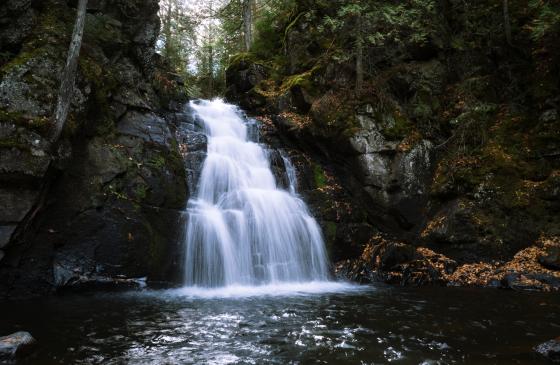This paper was submitted in conjunction with scoping comments for an environmental assessment on the proposed Northern Minnesota Federal Mineral Withdrawal. This white paper addresses one of the Twin Metals Minnesota deposits, the Maturi deposit, being investigated for potential mining in the Duluth Complex. Maturi would be an underground mine, but it should be noted that both open pit and underground mining have been discussed as possibilities for mining the Twin Metals copper-nickel deposits in the Duluth Complex (AMEC 2014).
The fact that this is a white paper, instead of a technical report on the Maturi deposit, clearly says this is not addressing fully developed geochemical, hydrological, or mining data on the Maturi deposit. The white paper also interchangeably addresses Twin Metals Minnesota Project and the Maturi deposit, leading to some confusion with the conclusions drawn about minimizing waste rock production, as well as the geochemistry of the other Twin Metals deposits.
This white paper leaves the impression that there is very little risk of acid drainage from the development from the underground mine at the Maturi deposit. All potentially reactive development (waste) rock, and approximately 40% of the tailings, would be backfilled into the mine. While this is an advantage over open pit mines, which generate much more waste rock than an underground mine relative to the amount of ore produced, there is still limited space in an underground mine to return this material, as evidenced by the partial amount of tailings that can be backfilled.
I am familiar with an underground mine not dissimilar to the Maturi proposal, the Greens Creek mine in Alaska, where all potentially acid generating was to be backfilled, and where the tailings were predicted to be non-acid generating. What has actually developed at this mine is that there is now more potentially acid generating waste rock than can be backfilled, so it is now being brought to the surface for disposal, and the tailings are now clearly acid generating.
In addition, when open pits are utilized, as at the proposed NorthMet deposit, waste rock disposal becomes a significant problem because of its potential to generate acid and metal contaminants. Typically, over 99% of all material mined, ore and waste rock, remains onsite as waste after mining and processing. In most metal deposits iron sulfides are the most common minerals. Iron sulfides have no economic value, so they end up in the tailings, and remain in the waste rock.
Iron sulfides are also the primary source of acid mine drainage. Acid mine drainage, and the contaminants it leaches into water, are all natural. However, when these minerals are imbedded in a rock mass, the availability of the minerals to air and water is limited to natural fractures in the rock, so acid mine drainage takes place relatively slowly. When the same rock is mined, the rock is broken into pieces that are now easily exposed to air and water. The resulting acid mine drainage, especially in waste rock, can occur at rates hundreds to thousands of times that of natural weathering.
The possibility of unanticipated, unpredicted, results from mining must be considered when reviewing whether mining should be allowed in an area.
Re: Editorial Comments on the Memorandum, "Lack of Hydrologic Basis for BLM and USFS Decision to Reject Renewal of Twin Metals Minnesota's Mineral Leases and Potentially Withdraw Federal Minerals in the Rainy River Watershed," Foth Infrastructure & Environment, LLC, August 9, 2017
This memorandum was very instructive to read as a detailed tutorial on how to conduct and interpret a hydrologic model. However, the basic premise of this rather cynical document is fundamentally flawed.
As a researcher of public lands policy for 30 years, I contend that it is not the public land manager’s responsibility to prove that a proposed development will contaminate public resources (in this instance surface and ground waters), but the responsibility of the developer to prove to the public land manger that the development will not impair public resources. Foth should be providing a defensible regional hydrologic model that shows contamination, even if it occurred, could not negatively affect the BWCA Wilderness.
The Foth report ends by impugning public land managers for focusing on the impacts of pre-1990 mines. While there is a lack of good data for mining impacts on streams in the western US, the general citation for mining impacts on streams in the US is:
“In the United States, mining adversely affects over 19,300 km (12,000 miles) of rivers and streams and over 730 km (180,000 acres) of lakes and reservoirs.” (Kleinmann 1990)
Bob Kleinmann, Ph.D., geologist, has authored or co-authored more than 90 publications concerning mining environmental technology. In addition, he wrote the coal mining portions of the free on-line Global Acid Rock Drainage (GARD) Guide, and has edited six books, including one about predicting water quality at surface coal mines and another on acidic pit lakes. The data is from coal mining, and was assembled by Dr Kleinmann.
Numerous post-1990 mines are causing significant environmental impacts. The Grouse Creek and Beartrack mines in Idaho are examples in my region. If one moves the arbitrary date of 1990 back to 1980, or even 1985, the number of problematic mines jumps almost exponentially.
To the point, the numbers are not that important, but impacts should be of ongoing concern.
References:
AMEC 2014. Duluth Metals Limited, Maturi, Maturi Southwest, Birch Lake, and Spruce Road Cu-NiPGE Projects Ely, Minnesota USA, NI 43-101 Technical Report, AMEC, 10Apr14
Kleinmann 1990. Acid Mine Drainage in the United States, Robert Kleinmann, US Bureau of Mines, Proceedings, First Midwestern Region Reclamation Conference, Southern Illinois University, Carbondale, IL, July 1990.
02/16/2018
